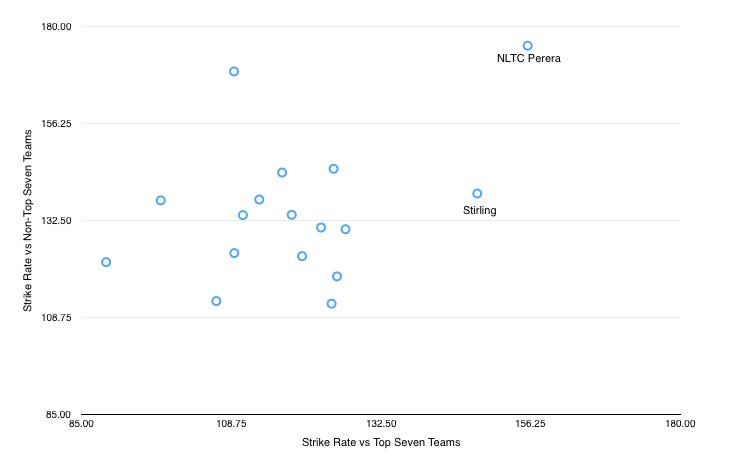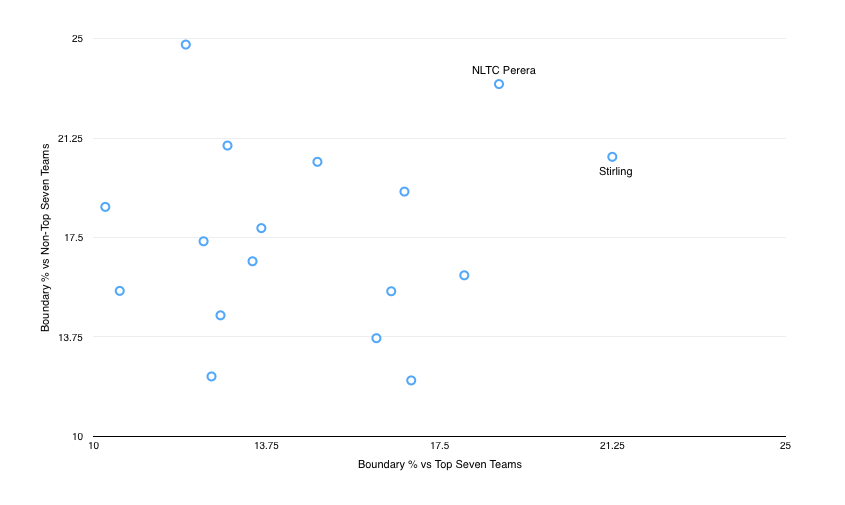With there being a number of impressive performances from both associate players and players from nations not generally at the top of cricket, there’s been plenty of discussion on social media about whether teams are missing out by not signing certain players from so-called smaller nations. Some are even advocating that it should be mandatory for IPL teams to sign several associate players.
First of all, I’d like to make a clear point - I’m hugely in favour of an inclusive cricket calendar where full members, or bigger nations, need to play regular fixtures against smaller teams, or associate nations. Having a truly global game with numerous countries participating can only be a positive for the sport, and in my view there should be more steps taken to ensure that this happens. We only have to see the progress that Afghanistan have made in recent years to see how some so-called ‘smaller’ nations can quickly compete at a high level with the best teams in international cricket. Lower-profile players can only improve with more exposure against the best players in the sport, and these opportunities have to be maximised.
However, this doesn’t mean that I’m necessarily a big advocate of recruiting players who have performed well against smaller nations on a regular basis. To start with, imagine a hypothetical world where a football team needs to decide between two strikers, one who has scored 40 goals in 40 games and the other who has scored 30 goals in 40 games.
First-level teams might pick the 40 goal striker without doing any further due diligence but the obvious correct answer would be that it’s impossible to say which is better without further information. If we knew, for example, that the 40 goal striker played in League Two, while the 30 goal striker played in the Premier League, then the decision obviously switches to the 30 goal striker being best, because any football fan would understand that it is obvious that there’s a big difference in difficulty in scoring goals between the Premier League and League Two.
The same difference exists in cricket. Runs scored against England and India for example, are in theory, worth more than if they are scored against weaker countries - because the quality of opposition bowlers is likely to be better. We can also rationalise this between T20 leagues as well - for example, my models suggest it’s easier to bowl in the Big Bash (big grounds, local batter pool which isn’t particularly boundary-hitting orientated) than it is in the T20 Blast (small grounds, most teams have numerous intent merchants). Essentially, all runs scored and wickets taken are not equal.
I’ve built models for this stuff. For a recent draft I built a specific model based on varying standards of different leagues, because this consideration is critical - having context behind performances is absolutely vital. I can’t give much more detail on this kind of thing in the public domain, but any teams interested in finding out more can get in touch via sportsanalyticsadvantage@gmail.com.
With the World Cup taking place now, I wanted to use international cricket as an example for this article. What I did here was to look at batters from what I classified as non-top seven nations (with the top seven being Australia, England, India, New Zealand, Pakistan, South Africa and the West Indies) and compare performance levels against these top seven nations and non-top seven nations. In all, 17 batters faced 100+ balls against both groupings of nations from the start of 2018 onwards, and their basic strike rate data is illustrated below:-
The identity of the individual players isn’t particularly important, but I added Thisara Perera and Paul Stirling to the chart because they were the only two players who managed a strike rate of over 130 against top-seven teams.
Compare this with the number of players in the sample, 11, who managed a strike rate of at least 130 against non-top seven teams. Seven players of the 17 in the sample had a greater than 20 runs per 100 balls strike rate reduction against top seven teams than non-top seven teams, while only Stirling, plus Tamim Iqbal and Wesley Madhevere managed a higher strike rate against top seven opposition than non-top seven opposition.
A similar story can be seen by the batter boundary percentage, again comparing performances versus top seven teams and non-top seven teams:-
Again, Perera and Stirling stand out, but you’ll see that only three players were able to produce a boundary percentage in excess of 17.5% against top seven teams, compared to eight against non-top seven teams - again, the difference in standard of opposition bowlers is illustrated.
This very basic analysis, in itself, shows you the difference in standard between various opposition groupings and recruiters must take this into account. So next time you see an associate player, or a player from a smaller nation described as potentially being a great signing for an IPL team (or for teams in other franchise leagues), make sure that they’ve actually done it against top players and top teams as well - because based on this evidence at least, very few actually can at the current time.




